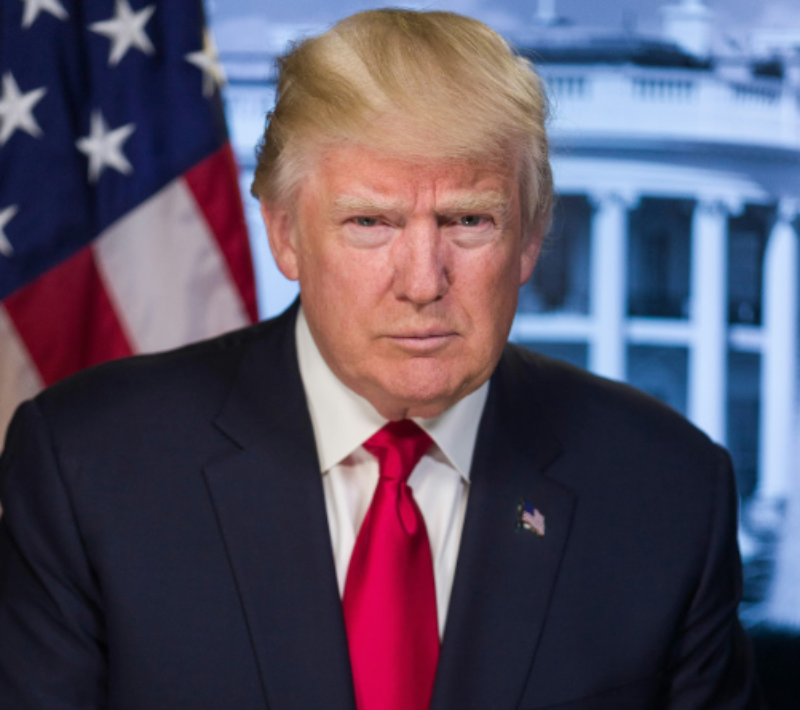Trump’s Tariff: Escalating Trade Wars and Global Economic Impact

Table of Contents
Since returning to the White House in January 2025, President Donald Trump has dramatically intensified trade tensions with China and other nations through a sweeping series of new tariff policies.
What began as campaign promises has quickly evolved into one of the most aggressive trade confrontations in modern American history, with significant implications for consumers, businesses, and the global economy.
The scale of President Trump’s tariff measures is unprecedented in recent decades. Chinese imports now face tariffs of up to 145%, representing the steepest U.S. trade penalties since the 1930s Smoot-Hawley era that many historians associate with deepening the Great Depression. Beyond targeting China, Trump has implemented a new baseline tariff of 10% on goods from most other countries worldwide.
The current trade tensions have rapidly intensified since Trump returned to the White House. On February 1, just days after his inauguration, Trump signed an executive order imposing initial tariffs on Mexico, Canada, and China, declaring the situation a national emergency that required immediate action.
While a 30-day pause on tariffs against Mexico and Canada was quickly negotiated following diplomatic outreach from those nations, the 10% tariffs on Chinese imports took effect on February 4, with China retaliating almost immediately.
By February 10, Trump had announced plans to increase steel and aluminum tariffs, citing national security concerns similar to those he raised during his first term. Three days later, on February 13, he declared his intention to implement “reciprocal” tariffs designed to match other countries’ tax rates on American goods, a move that significantly broadened the scope of the trade conflict beyond China.
This rapid succession of policy announcements created an atmosphere of uncertainty in global markets and among international trading partners. The speed of implementation has left many businesses scrambling to adjust their supply chains and pricing strategies, with limited time to develop alternative sourcing or manufacturing approaches.
All imported steel and aluminum now carry a hefty 25% tariff that took effect on March 12, while the automotive sector faces 25% duties on imported cars beginning April 2, with similar tariffs on car parts starting May 3. These measures represent a dramatic shift in American trade policy that reverses decades of movement toward freer global trade.
Though Trump has temporarily paused higher tariffs for approximately 60 countries during a 90-day negotiation period, China remains firmly at the center of these escalating trade measures. This targeted approach reflects the administration’s focus on what Trump has repeatedly called “unfair Chinese trade practices.”
What Are Tariffs and How Do They Work?
For many Americans, tariffs may seem like abstract economic policy, but their effects are quite tangible in everyday life. Simply put, tariffs are taxes charged on goods entering the United States from other countries. When the government implements a tariff, it directly increases the cost of bringing foreign products into American markets.
To understand this in practical terms: if a Chinese-made blender that typically costs $50 is subject to the new 145% tariff, its price would potentially jump to $122.50. Similarly, a $30,000 imported car affected by the 25% automotive tariff could see its price rise by $7,500 to $37,500.
It’s important to understand that while these taxes are initially paid by American companies importing the goods, the increased costs rarely stop there. Importers typically pass these expenses on to retailers, who then pass them along to consumers through higher prices on store shelves. This chain reaction means that American shoppers ultimately bear much of the burden of tariff increases, despite the policy’s aim of targeting foreign producers.
The Complex US-China Trade Relationship
The economic relationship between the United States and China has grown increasingly complex over the past several decades. In 2024, the U.S. imported approximately $440 billion worth of goods from China, while China purchased only $145 billion in American products. This substantial trade imbalance which is a deficit of nearly $300 billion has been a persistent political flashpoint and a key motivation for Trump’s aggressive trade policies.
Despite previous tariffs imposed during Trump’s first term (which were largely maintained during the Biden administration), China has remained a crucial trading partner for the United States. Chinese factories supply American consumers with everything from sophisticated electronics like iPhones and computers to everyday items such as clothing, furniture, and children’s toys.
This relationship has evolved over time. China’s share of America’s total imports has declined from 21% in 2016 to 13% in 2024. This reflects both the impact of previous tariffs and American companies’ efforts to diversify their supply chains. However, completely decoupling from Chinese manufacturing has proven difficult for many industries due to China’s established manufacturing infrastructure, skilled workforce, and integrated supply networks.
Beijing has not accepted these new American tariffs passively. Instead, Chinese authorities have implemented their own substantial countermeasures, imposing 125% tariffs on U.S. imports beginning April 12. In a move that signals their determination, Chinese officials have taken the unusual diplomatic step of announcing they will not respond to any further U.S. increases, dismissively calling them a “joke” in international trade circles.
China’s retaliation extends beyond simple tariff reciprocation. The government has launched multiple punitive measures specifically targeting American interests. In a move clearly aimed at pressuring American tech giants, China has initiated an anti-monopoly investigation into Google that could potentially restrict its access to the massive Chinese market.
Additionally, they’ve strategically applied 15% tariffs on U.S. coal and liquefied natural gas exports, products from states that strongly supported Trump, along with 10% levies on crude oil, agricultural machinery, and large-engine automobiles.
These calculated responses demonstrate China’s sophisticated understanding of America’s political and economic pressure points. By targeting industries in politically significant regions, China aims to maximize economic and political impact within the United States. Chinese officials have also begun publicly encouraging Chinese consumers to boycott American brands, this could further hurt U.S. companies with significant Chinese market presence like Apple, Nike, and Starbucks.
“China will not be intimidated by any extreme pressure tactics,” stated Chinese Commerce Ministry spokesman Li Xuhong in a recent press conference. “We have the determination and capability to defend our legitimate rights and interests.“
Real Impact of Trump’s Tariffs on American Consumers and Markets
For average Americans, the most immediate and noticeable effect of this trade conflict will be higher prices across a wide range of everyday products. Economists anticipate significant price increases in numerous categories that rely heavily on imports.
Consumer electronics, including smartphones, laptops, and televisions, could see price increases of 10-20% as manufacturers adjust to higher component costs. Clothing and footwear, categories where China remains a dominant supplier, are expected to become 5-15% more expensive in the coming months. Even household items like furniture, appliances, and kitchenware products that many Americans purchase regularly will likely carry higher price tags as retailers adjust to increased import costs.
The automotive industry faces particularly dramatic impacts. With complex global supply chains and heavy reliance on imported components, car manufacturers project price increases of $4,000-$10,000 per vehicle, depending on the origin of various parts. This could significantly affect an already challenging automotive market where high interest rates have dampened consumer demand.
Some companies have already announced specific plans to raise prices. Chinese e-commerce retailers Shein and Temu, which have gained popularity among American consumers seeking affordable fashion and household goods, plan to implement across-the-board price increases effective April 25. Luxury brands like Ferrari are also preparing significant price adjustments, highlighting how the tariffs affect products across all price points.
Further complicating matters for online shoppers, the administration has eliminated what was known as the “de minimis” loophole, which previously allowed duty-free import of goods valued under $800. This change will particularly impact consumers who frequently purchase products directly from overseas websites, a growing segment of American shoppers who seek bargains through international e-commerce platforms.
Beyond retail prices, global stock markets have experienced pronounced volatility following these tariff announcements. The Dow Jones Industrial Average dropped nearly 800 points the day after the automotive tariffs were announced, while Chinese markets have seen similar turbulence. This market uncertainty affects Americans’ retirement savings, employment prospects, and even interest rates for mortgages and other loans.
President Trump has articulated several goals for his aggressive tariff policy that resonate with many Americans concerned about manufacturing job losses and trade imbalances. He argues these measures will encourage consumers to purchase more domestically produced goods, generate additional tax revenue for the government, and drive increased business investment within the United States. The president frequently emphasizes his belief that these policies will reduce the U.S. trade deficit and prevent America from being “taken advantage of” by foreign competitors.
“For too long, we’ve watched as other countries got rich at America’s expense,” Trump stated at a recent manufacturing facility visit in Ohio. “Our factories closed, our jobs disappeared, and our wealth was shipped overseas. With these tariffs, we’re saying enough is enough. It’s time America gets treated fairly in global trade.”
Supporters of the president’s approach point to specific cases where companies have announced plans to relocate production to the United States in response to the tariffs. They also highlight the revenue generated by tariff collection, nearly $84 billion in 2024, a figure expected to rise substantially under the new rates.
However, many economists, including some who typically align with Republican policy positions, have expressed serious concerns about this approach. They warn that a prolonged trade war could trigger a global recession by disrupting established trade patterns and reducing overall economic activity. Complex supply chains that American businesses have built over decades could face significant disruption, potentially causing production delays and additional costs beyond the tariffs themselves.
Perhaps most concerning for many Americans already struggling with high living costs, economists predict these measures will accelerate inflation at a time when consumers are seeking price relief. Companies dependent on imported components for their products face difficult choices: absorb the costs and reduce profits, pass costs to consumers through higher prices, or cut jobs and other expenses to maintain margins.
For ordinary Americans, the practical implications of this trade war will likely become increasingly apparent in the coming months through higher prices on everyday goods, potential disruptions in product availability, and possible impacts on employment in industries dependent on global trade.
Businesses that rely on global supply chains are already implementing contingency plans, with some considering relocating production or finding alternative suppliers outside of China, changes that involve significant cost and complexity.
Meanwhile, China appears prepared for a prolonged economic confrontation. Chinese officials have begun discussing increased trade with other partners, particularly in Asia and Europe, as alternatives to the American market. They’ve also accelerated programs designed to make China more self-sufficient in key technologies like semiconductors and artificial intelligence, reducing their vulnerability to American trade restrictions.
As this economic conflict unfolds, Americans across the country will feel its effects in ways both obvious and subtle, from higher prices at retail stores to shifts in employment opportunities in trade-sensitive industries. The ultimate resolution of this trade war will depend not only on policy decisions in Washington and Beijing but also on how businesses, consumers, and global markets adapt to this new era of economic nationalism and protectionism.
“When the world’s two largest economies engage in this kind of confrontation, the ripple effects touch everyone,” noted former Treasury Secretary Lawrence Summers in a recent interview. “The question isn’t whether there will be costs, there certainly will be, but whether the benefits will ultimately justify those costs. That remains very much an open question.“
Dr. Anita is a medical doctor with a passion for writing. She explores a variety of topics on Afrolady, from health and wellness to relationships and lifestyle. With a knack for breaking down complex ideas, she keeps readers informed, entertained, and inspired.

